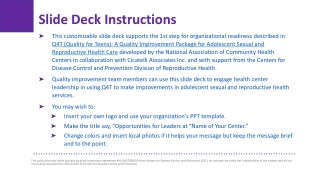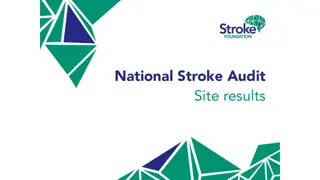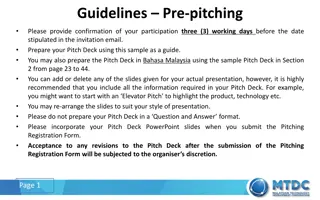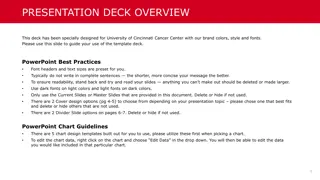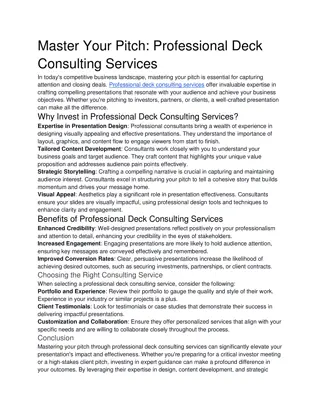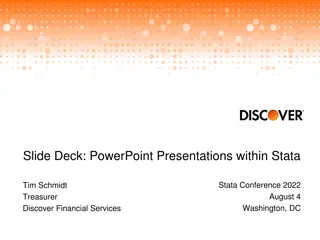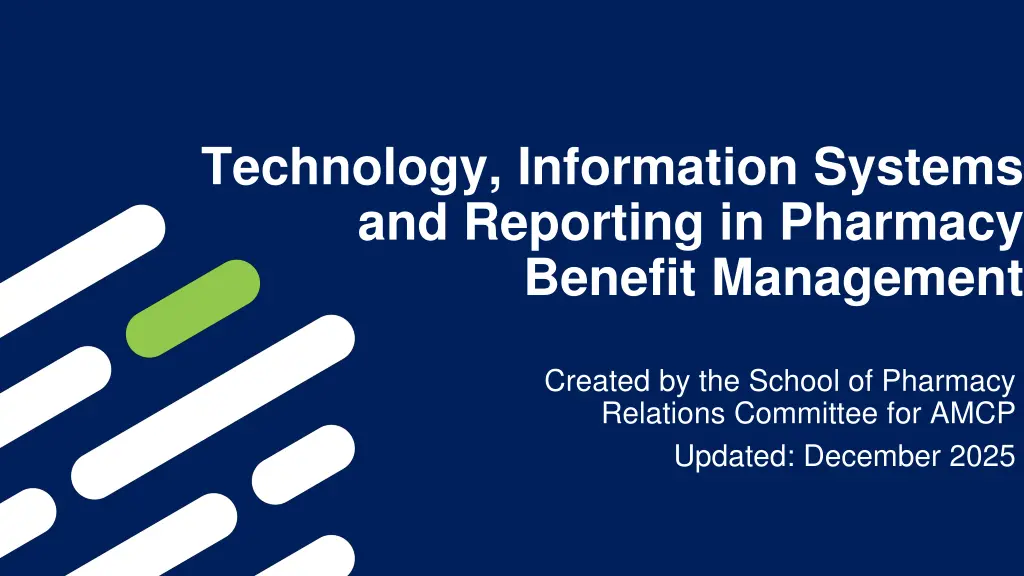
Technology and Reporting in Pharmacy Benefit Management
Explore the role of technology, information systems, and reporting in managed care pharmacy, including the impact on communication, streamlined processes, decision-making support, and the integration of artificial intelligence. Learn about prescription data flow, standards set by the National Council on Prescription Drug Programs, the current NCPDP standard, and the functions of point-of-service systems.
Download Presentation

Please find below an Image/Link to download the presentation.
The content on the website is provided AS IS for your information and personal use only. It may not be sold, licensed, or shared on other websites without obtaining consent from the author. If you encounter any issues during the download, it is possible that the publisher has removed the file from their server.
You are allowed to download the files provided on this website for personal or commercial use, subject to the condition that they are used lawfully. All files are the property of their respective owners.
The content on the website is provided AS IS for your information and personal use only. It may not be sold, licensed, or shared on other websites without obtaining consent from the author.
E N D
Presentation Transcript
Technology, Information Systems and Reporting in Pharmacy Benefit Management Created by the School of Pharmacy Relations Committee for AMCP Updated: December 2025
Overview Understand how technology facilitates communication and streamlines processes in managed care pharmacy Understand the benefits of information systems in managed care pharmacy Understand how data and information support decision making in managed care pharmacy Consider current and future roles of artificial intelligence (AI) within managed care pharmacy
Prescription Data Flow National Drug Database Key: Pharmacy Electronic data transfer Verbal/written communication Money transfer Prescription dispensed Data storage and retrieval Employer Patient Happy, healthy patient Future data repository Health care provider Payor
How Do We all Understand Each Other? National Council on Prescription Drug Programs (NCPDP) Sets standards for pharmacy and supplier transaction Telecommunication of prescription claims data Allows various stakeholders and software programs to communicate and understand each other Standards established by industry leaders and stakeholders and revised continuously Standard format used by multiple organizations Pharmacy benefit managers Insurance companies Managed care organizations Pharmacies Regional Heath Information Organizations (RHIO)
Current NCPDP Standard NCPDP Version D.0 is the current telecommunication standard (effective January 2012) Identifies the source of the prescription: e-prescribing, telephone, written or mail Allows payers to identify what type of pharmacy is submitting a claim (retail, long term care, mail, etc.) Allows pharmacies to submit all ingredients in a compound so that payers can process claims more accurately Provides additional fields to explain payments more succinctly. Standards are continuously revised to meet new market and clinical management needs The NCPDP standard enables real time point-of-service communication between pharmacies and claims processors.
Functions of Point-of-Service Systems Information are provided by employers, third party payers, and health plans: Eligibility verification Copayment determination Evaluation of formulary compliance, drug therapy restrictions, preauthorization requirements The information is stored in the claim s processor s databases and used to process prescription drug claims
Who Benefits from Real Time Claims Processing? Pharmacies Paid or denied claim response within seconds o Is the drug covered? o How much will I be paid? o What is the copay? o Are there drug interactions or other potential clinical concerns? Payers, Plan Sponsors and Prescription Benefit Managers (PBMs) o Is payment appropriate? o How much do I owe the pharmacies? o Did the patient pay the correct copay? o Is the dispensed drug appropriate drug for patient s diagnosis? o Is the dosage appropriate? o Have potential safety concerns been considered?
Who Benefits from Real Time Claims Processing? Cont d Patients Quick response o Is drug covered? o What is the copay and/or deductible? o Are there any potential safety issues such as drug interactions, duplicate therapy, etc.? o Excluded drugs are denied prior to dispensing o Real time processing eliminates the need for patients to pay up front and send in receipts for reimbursement.
E-Prescribing NCPDP Standards also facilitate electronic communication Prescribers can check eligibility and formulary status Prescribers can send electronic prescriptions directly to pharmacies E-Prescribing provides a legible script with the potential to reduce errors CMS (Center for Medicare and Medicaid Services) required all physician providers to implement e-Prescribing by 2014 There are many e-Prescribing systems on the market today, they need to be qualified by the state boards of pharmacy if they are to be used by a provider in the state.
Management Information Systems What is a Management Information System (MIS)? A system that uses people and technology to store, analyze and present data Facilitates placing data into a context (information) Information facilitates strategic planning and operational decision making Management Information Systems make it possible for decision makers to capture and make use of all the data that moves back and forth.
Sources of Pharmacy Data Gather and analyze data from multiple sources Patient name, date of birth, allergies, family placement, address, etc. Healthcare Provider medical data to supplement prescription drug data in clinical decision making Plan Sponsor (employer, CMS, etc.) enrollment date, termination date, group information, etc. formulary tier placement, prior authorization, daily dose, etc. o o o
Sources of Pharmacy Data Gather and analyze data from multiple sources, cont d Pharmacies Claim information (patient, drug, dose, day supply, fill date, etc.) Claims processor (PBM or administrative services firm) Information regarding paid, denied, and reversed claims (patient, drug, dose, day supply, fill date, etc.) First Data Bank, Medispan Drug name, strength, dosage form, therapeutic class, price, etc.
Reporting The data from all sources are mapped into databases, which are a key component of information systems Information systems facilitate report generation and decision making Benefits Trend analysis Assessment of drug utilization and associated costs Evaluation of prescribing and/or use patterns Evaluation of intervention programs Assessment of patient compliance
Quality Assurance Information systems and reports can also assist benefit managers to proactively or retrospectively intervene on prescription claims Drug utilization review Formulary and coverage management Evidence-based medicine protocols
Conclusion Electronic point-of-service claims processing technology streamlines the claims processing process and provides valuable data to a variety of end users. E-Prescribing is an important technological development to streamline prescribing and improve patient safety. Information systems store data in a way that is retrievable by end users and useful in decision making.
Recent and Future Developments NCPDP recently adopted standards for electronic prior authorization (ePA) Claims processors, plans and other entities are working to develop ePA capabilities Prescribers will know PA requirements before a prescription is written PA may be approved before the prescription is transmitted to the pharmacy Will streamline the PA process, making it more efficient for patients, prescribers, and payors.
Artificial Intelligence (AI) in Managed Care What is AI? at a high level computers/machines perform functions that need elements of reasoning and typically would require human intelligence AI is now generative allows content and analysis to be generated based on data and information available AI has several potential applications in managed care
Artificial Intelligence (AI) in Managed Care Potential AI functions in managed care (examples) Contract reviews Claims Monitoring Customer Service Outreach Targeting Formulary Design based on population P&T and monograph review/prep
Artificial Intelligence (AI) in Managed Care Challenges, Risks, Limitations Accuracy of information generated Data privacy Bias within AI Cost-effectiveness of using AI Organizations must have mitigation strategy and processes May leverage third party for support Implement governance processes Training and vendor management; responsible use Leadership level PHI/PII review
Artificial Intelligence (AI) in Managed Care HHS announced AI strategic plan in Jan 2025 Link: https://www.healthit.gov/topic/hhs-ai-strategic-plan Several divisions impacted, not limited to: o CMS: responsible use of AI regarding payment and regulatory policy o FDA: Oversight industry guidance, AI in medical product development, AI-based medical products, international regulatory collaboration o HRSA: AI equitable use underserved/healthcare professional education
Mission & Vision To improve patient health by ensuring access to high-quality, cost-effective medications and other therapies.


